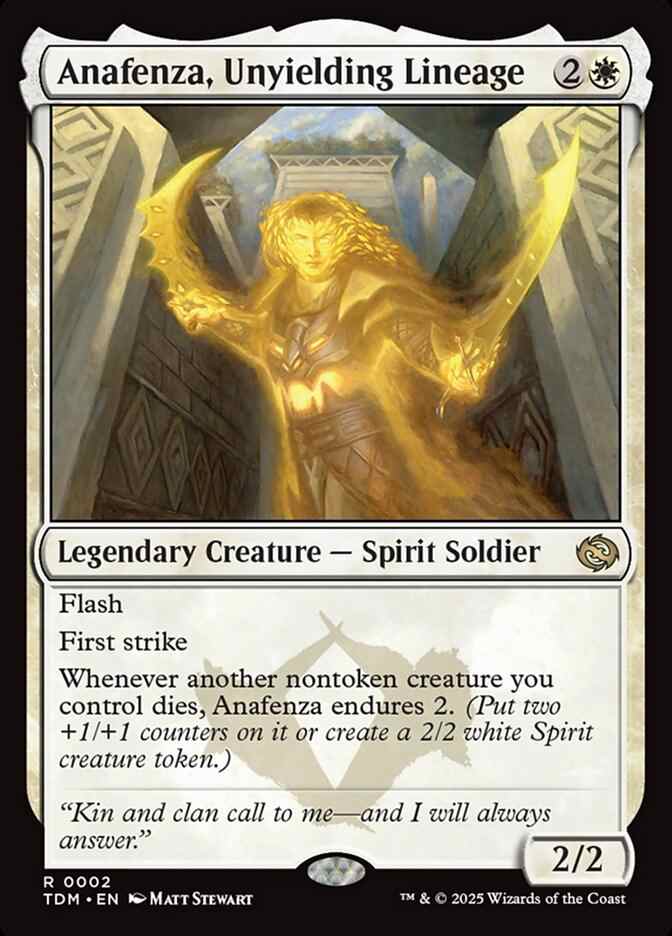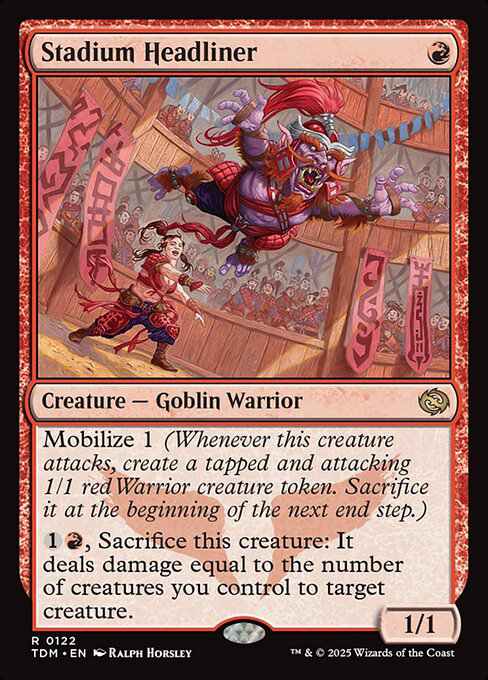Unleashing the Fury: What is Tarkir: Dragonstorm?
Today in our Tabletop Library, we’re excited to dive into Tarkir: Dragonstorm, the newest Magic: The Gathering set. This one’s a real treat for fans, bringing together everything people loved about the original Tarkir block. If you’ve ever wished for a perfect mix of dragons and clans, you’re going to love what’s coming.
Tarkir: Dragonstorm has been put together as a proper “best of both worlds” experience, blending the standout features of Khans of Tarkir and Dragons of Tarkir. Khans gave us three-colour clan gameplay, while Dragons turned up the heat with powerful, iconic dragons. Luckily, this new set promises both — so expect a battlefield packed with dragon fire and fierce clan rivalries(what I expect at least).
Tarkir’s famous for its three-colour “wedge” factions, and fans will be pleased to know they’re making a big comeback. But Tarkir: Dragonstorm isn’t just about nostalgia — it’s refining the way factions play and feel. In doing so, it captures the spirit of Tarkir’s original story.
The set is due to release on 11 April 2025 and marks the conclusion of the Dragonstorm Arc. Whether you’re here for the dragons, the clans, or just fancy a new adventure on the battlefield, Tarkir: Dragonstorm looks set to deliver in style.
A very, very short look at Tarkir Storyline
Tarkir’s no stranger to change, but what’s happening now feels different. Once a land of proud clans and deadly dragons, the plane has shifted once again — and the scars of the Phyrexian invasion have only made things more volatile. It all goes back to Sarkhan Vol, the Planeswalker who couldn’t leave his home plane’s fate alone. Around 1,200 years ago, Sarkhan travelled back through time to save the legendary spirit dragon, Ugin, from being killed by Nicol Bolas. Although Ugin was left battered and broken, he managed to survive by slipping into a deep, healing slumber within a nest of ancient hedrons. As Ugin’s spirit merged with the essence of Tarkir itself, dragonstorms roared to life, and dragons began to fill the skies once more.
With dragons growing stronger and more numerous, the old human clans quickly lost their grip. Under the leadership of the fearsome dragonlords, the dragons turned on the khans, killing the clan leaders and breaking apart the old ways.
Those who survived faced a grim choice: either abandon their traditions and swear loyalty to the dragon broods, or be driven into hiding — or worse. For centuries after, the dragon broods fought bitterly among themselves for dominance, their rivalries reshaping Tarkir’s destiny.
Stormnexus
As the dragons grew more complacent, their rule turned harsh and brutal, especially for the non-dragons living under their claws. Over time, whispers of rebellion began to stir among the scattered remnants of Tarkir’s people.
One figure, however, refused to accept endless conflict as the plane’s fate. Former Planeswalker Narset took it upon herself to find another way. Her studies led her to uncover the existence of the Stormnexus — a mysterious force tied to the dragonstorms themselves and deeply woven into the fabric of Tarkir’s magic.
With the Stormnexus offering a glimmer of hope, Narset aims to bridge the divide between dragons and humanoids.
Although she understood the risks, Narset was eventually convinced by the rebellion’s leaders to wield the Stormnexus in a daring attempt to reshape their world.
Gathering at the Crucible of the Spirit Dragon, Narset and her allies performed the ritual. Their spell unleashed an enormous dragonstorm, from which five primal dragon spirits emerged. Each spirit chose a human partner, merging their forms and forging new champions for a reborn Tarkir.
However, the dragonlords weren’t about to step aside quietly. As the ritual raged, they struck, leading to a fierce battle against the newly awakened spirit dragons. In the end, the dragonlords fell, consumed by the storm they had once commanded. But the ritual’s power didn’t stop there — it supercharged the dragonstorms, giving rise to a wild new generation of dragons, fiercer and freer than ever before.
Dragonlords defeated
With the dragonlords defeated, Tarkir’s people rebuilt. The old clans reformed, taking inspiration from both their ancient traditions and the dragon broods they had once served. Though a fragile peace exists, it’s hardly perfect — ideological rifts often flare into open conflict, and the harsh environments, fuelled by the growing dragonstorms, spark constant battles for land and survival.
In this new Tarkir, two kinds of dragons have emerged. The clan dragons — descendants of the dragonlords’ broods and newcomers who honour the spirit dragons — now live alongside the humanoid clans. In contrast, wild dragons answer to no one, roaming the plane as fierce predators. Though usually solitary, even the wildest dragons will sometimes band together, forming temporary packs when it suits them.
Tarkir: Dragonstorm’s Clans
The Jeskai: Masters of Mind and Motion
High in Tarkir’s eastern mountains, the Jeskai have built a life of balance, discipline, and purpose. Led by monk practitioners of the Way, this clan is devoted to the idea that true unity — of mind, heart, and action — is the key to a better future.
Drawing power from blue, red, and white mana, the Jeskai blend sharp intellect, fierce passion, and unshakeable order. Life among them revolves around disciplined meditation, rigorous martial training, and a clever knack for turning the battlefield to their advantage. They live in villages clustered around three great monasteries, where daily life is steeped in ancient traditions.
For the Jeskai, cooperation is everything. They believe the best results come from coordinated effort, shared understanding, and hearts aligned toward a common goal. If diplomacy fails — and it often does, thanks to their stubborn belief in their own way of thinking — the Jeskai don’t hesitate to show their tactical brilliance in battle.
Though monks form the core of their ranks, civilians who support the monasteries are just as vital. Everyone in Jeskai society plays a role in upholding the ideals of the Way.
Inspired by classic Chinese art and cinema — think Crouching Tiger, Hidden Dragon — the Jeskai aren’t just warriors or philosophers. They’re a living example of precision, compassion, and the fierce will to bring Tarkir together through structure and understanding.
The Abzan: Bound by Blood
In the shifting sands and rugged valleys of Tarkir, the Abzan endure. Centred around white, black, and green mana, this proud clan lives by one unshakable truth: family is everything. Loyalty to one’s house shapes every decision, often outweighing personal ambition or even the good of the wider community.
The Abzan see it as their sacred duty to protect the world for future generations — a duty that carries on even after death. Their sprawling houses are vast extended families, made up not only of elders and descendants, but also those who have married or been adopted into the fold. Every member, living or dead, plays a role in holding the family strong.
Trading is the lifeblood of the Abzan. Their caravans crisscross the plane, moving goods and rare materials with practised ease, no matter how treacherous the journey. On the battlefield, they are a force to be reckoned with: patient, resilient, and impossible to dislodge. Their warriors favour heavy armour and solid formations, overwhelming enemies through sheer endurance rather than flashy manoeuvres.
At the heart of Abzan life stands the Kin-Tree — a sacred living monument where ancestral spirits reside. It’s from these spirits that the Abzan draw strength, summoning the wisdom and might of those who came before to aid them in times of need. This enduring connection binds every generation to the next in a chain that cannot be broken.
The Mardu: Born to Ride, Fight, and Conquer
Roaming across the endless steppes and grassy plains of Tarkir, the Mardu are a people who live and breathe challenges. Channeling red, white, and black mana, they are fierce nomads, famed for their lightning-wielding warriors, deadly archers, and battle-hardened beastriders.
The Mardu don’t bother with cities or fortresses. Instead, they travel the land in great dalkovans — massive caravans able to set up bustling camp cities in a matter of hours. Their way of life is fast, mobile, and relentless, built around a tight military structure where every clan member, from the youngest scout to the oldest smith, has a role to play. In a Mardu camp, the blacksmith who forges blades might just as easily be a seasoned warrior or an expert beast trainer.
Strength, speed, and sharp instincts define the Mardu spirit. Their warriors are quick to adapt, trained through brutal sports that sharpen both body and mind. Animals of all shapes and sizes march alongside them, each one expertly trained to fight, hunt, or carry supplies.
For the Mardu, words mean little. Deeds — bold, brave, and brilliant — are what matter. Leaders must prove themselves in action, earning the loyalty of their warriors through sheer grit and skill. If you can’t keep up, the Mardu will leave you in the dust.
The Sultai: Masters of Life, Death, and Opportunity
Deep in the wild, tangled jungles of Tarkir, the Sultai have made their home — and their empire. Channeling black, green, and blue mana, they’ve turned chaos into order, carving grand cities and fertile farms out of the relentless wilderness. Where others might see danger, the Sultai see a way.
Power here flows like the rivers that weave through their lands: unpredictable, and rarely staying in one place for long. Leadership is scattered across clever nobles, powerful necromancers, and ruthless generals. In Sultai culture, death is never the end. Their most honoured ancestors are raised once more, guiding their descendants and serving the clan even beyond the grave.The Sultai military, known as the Lasyd, is lean but lethal. These warriors are masters of stealth and jungle warfare, outmanoeuvring larger forces with cunning and precision. Among them move spies, scouts, and assassins, slipping through the shadows of Tarkir and keeping a watchful eye on their rivals.
At the heart of it all lies the Abiding Harvest — the belief that all life returns to the earth, nourishing the next generation. Life, death, and rebirth are simply parts of the same great cycle. And no one understands how to use that cycle better than the Sultai and their Necromancers.
The Temur: Keepers of the Endless Song
High in Tarkir’s northern mountains, where winter reigns most of the year, the Temur make their stand. Drawing strength from green, blue, and red mana, they live in harmony with a harsh and beautiful world, moving with the seasons like the creatures they revere.
The Temur are hunters, herders, and gatherers — survivors born of ice and stone. Every member of the clan forms deep bonds with animal companions, who are more than allies; they are family. Life among the Temur is shaped by respect: for nature, for the spirits, and for the generations yet to come.
At the heart of the clan’s wisdom are the whisperers — seers who listen to the land and the Endless Song that binds all life. Guided by visions and omens, the Temur protect their territories fiercely, wary of outsiders who might upset the delicate balance they fight to preserve.
Isolationist by nature, the Temur value what the land provides, never taking more than they must. They believe that every mountain, river, and tree holds a spirit, and that through the Endless Song, all beings — past, present, and future — are forever connected.
Mechanics
The five clans of Tarkir, reborn after the fall of the dragonlords, each bring their own strengths to the battlefield. Though old rivalries remain, alliances may yet be forged as the dragonstorms grow ever fiercer.
Each clan has a unique mechanic that captures their identity, alongside abilities you already know from the plane.
Jeskai (Blue, Red, White)
Flurry — A special ability that triggers when you cast your second spell each turn.
Each Flurry ability has a different effect when it triggers.
It doesn’t matter what happened to your first spell — even if it was countered or fizzled.
Flurry can only trigger once each turn.
The creature with Flurry must be under your control when you cast the second spell, but it doesn’t need to have seen the first one.

Abzan (White, Black, Green)
Endure — A special action creatures can take, followed by a number (for example, Endure 3).
When a creature endures, choose one:
Place that many +1/+1 counters on it (making it stronger), or
Create a white Spirit creature token with power and toughness equal to the number (X/X).
If the creature is no longer on the battlefield when Endure happens, you automatically create the Spirit token instead.

Mardu (Red, White, Black)
Mobilise — A triggered ability that happens when a creature with Mobilise attacks.
The number after Mobilise shows how many 1/1 red Warrior creature tokens you create, tapped and attacking.
Even if the attacking creature dies or disappears, you still create the tokens.
The Warrior tokens are sacrificed at the beginning of the next end step, even if the original creature is gone.

Sultai (Black, Green, Blue)
Renew — A special ability you can use only at sorcery speed (during your main phase when the stack is empty).
To activate Renew, you must exile the card with Renew as a cost.
All Renew abilities put counters on creatures—usually +1/+1 counters, but sometimes other types too.
Some Renew abilities also give extra effects when you Renew.

Temur (Green, Blue, Red)
Harmonize — Lets you cast a card from your graveyard by paying its harmonize cost instead of its normal mana cost.
When you cast a card this way, you may tap an untapped creature you control to help pay.
If you do, you reduce the total cost by the tapped creature’s power—but only for the generic mana part (not for coloured mana).

Omen
Some Dragons have an extra spell called an Omen printed on the lower left of the card
When you cast the card, you choose: either cast the Dragon as a creature or cast its Omen spell.
If you cast the Omen, you only use the Omen’s name, mana cost, and effect—ignore the Dragon’s stats.
After the Omen resolves, shuffle the card into your library.
If the Omen is countered or doesn’t resolve, the card goes to your graveyard instead.

In your graveyard, hand, or library, the card is just a Dragon creature—the Omen part doesn’t exist there.
Behold
Behold a Dragon appears often as an additional cost to cast a spell. It means either:
Point at (choose) a Dragon you control, or
Reveal a Dragon card from your hand.
Some spells get extra effects if you do!
Surveil
Surveil X means:
Look at the top X cards of your library.
Put any number of them into your graveyard.
Put the rest back on top of your library in any order.
My thoughts about Tarkir: Dragonstorm
This is very strong set design work. The mechanics feel good without being complicated, the flavour is spot-on, and it looks like it would play really well. It’s a clean, elegant and very Tarkir-feeling set.
Abzan (Endure):
Endure fits Abzan perfectly — tough, steady, and generational (summoning Spirits if the creature is gone. It encourages long-term board presence and gives Abzan a reliable late-game plan.
Jeskai (Flurry):
Flurry is clean and has a nice “build-up” feeling. Jeskai seems to chain spells, so rewarding the second spell feels very interesting. Encourages a tempo/midrange style without being overwhelming.
Mardu (Mobilise):
Mobilise is very Mardu: aggressive, fast, and warlike. The temporary tokens create an explosive battle moment but without ruining the opponent with permanent snowballing.
Creates tension — you get a burst but have to finish the job quickly.
This prevents Mardu from becoming oppressive in longer games, but keeps them deadly in the early turns.
Sultai (Renew):
Renew feels very Sultai — slow power, graveyard synergy, and incremental advantage. The fact you exile the card as a cost makes it balanced and limits recursion abuse.
Supports both grindy midrange and slower, control-based builds.
Exiling the card to create long-term value fits the Sultai vision of death feeding new life. It’s flexible too, depending on the counters and effects you attach to it. Slow advantage over time.
Temur (Harmonize):
Harmonize is amazing design. It feels very natural for Temur’s spiritual connection and resourcefulness, and using creature power to pay seems clever.
Gives Temur a flexible way to turn creatures into spells without pure mana reliance. Smart players will love it.
Tapping creatures makes you think about board presence differently. To me, it seems like a great late-game resource engine.
Omen: Adds flexibility to decks and gives Dragons much more strategic depth, you have quite two cards in one.
Each clan’s mechanic feels extremely well-matched to its colour identity and story flavour, while still being simple and intuitive for players to understand. The entire setup promises fun gameplay with lots of flavour and story packed into every choice.
Magic: The Gathering is a registered trademark, and its copyright is owned by Wizards of the Coast, Inc., a subsidiary of Hasbro, Inc. All rights reserved. All artwork is the property of their respective artists and/or Wizards of the Coast. This site is not produced, affiliated with, or endorsed by Wizards of the Coast, Inc.
